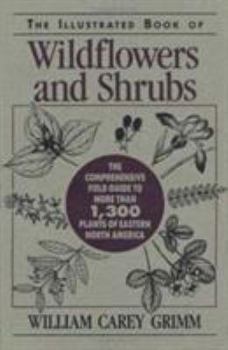Illustrated Book of Wildflower & Shrubs
No Synopsis Available.
Format:Paperback
Language:English
ISBN:0811730859
ISBN13:9780811730853
Release Date:September 1993
Publisher:Stackpole Books
Length:1 Pages
Weight:2.13 lbs.
Dimensions:1.8" x 6.0" x 9.1"
Related Subjects
Crafts & Hobbies Flowers Gardening Gardening & Landscaping Nature Plants Shrubs TreesCustomer Reviews
2 ratings
A GREAT Key to Wild Plant Identification
Published by Thriftbooks.com User , 23 years ago
I highly recommend this book, no get two because if you are like me-dragging one into the field-you are going to need a second copy for your reference shelf. With 1300 references to flowering plant life of Eastern North Amercia this author leaves almost nothing to doubt. This book has made all the difference to me in identifying native plants. That's because the author gives clear identifing features and details in his short descriptions, including bloom time, habitat, range and distinguishing plant characteristics. I found the book very easy to navigate because of the illustrations. It is well organized by GENERA and thumbing through the book will help you navigate to the correct species and type of plant. I can't recommend this book highly enough, especially for the advanced plantsman!!! You do need to have familarity with the difference between a daisy and a trillium, botanically speaking, to put this reference to work for you. This is an outstanding guide to plant identification, not a gardening book. However you can use the habitat information and the bloom time for use in planning. I am a member of the Georgia Native Plant society. I go out to rescue native plants from development sites and reestablish them in my home garden. I am very pleased with being to rapidly identify anything I come across thanks to this excellent reference.
Very good book, with limitations
Published by Thriftbooks.com User , 24 years ago
This volume is similar to the authors earlier work, "The Illustrated Book of Trees," which was (and is) a valuable resource for many people (including me). The books even look the same, in terms of binding, fonts, and form of illustrations. A large number of flowering plants and shrubs are presented with a short description of each one together with a black and white drawing of the critical features needed for identification (there are no color illustrations in this book). This is not a professional field guide, and there is no provision for "keying out" a specimen for positive identification. As far as I could tell, there is no attempt to provide a systematic approach to identify a specimen. As with the popular field guides for birds, species are listed in groups that share superficial properties that make them seem similar to a person encountering them in the field. Furthermore, the brief descriptions and illustrations are very good, and interesting. Additional positve features include a glossary and several other ancillary tables of information. The index is not exhaustive, but has almost everything I looked for. I only had access to this book for about one hour, but I can see spending lots of time with it and I am about to make the purchase. If you spend much time in the out of doors, and wonder about the identity of plants you encounter, this book belongs on your shelf (its a little heavy for the backpack).






